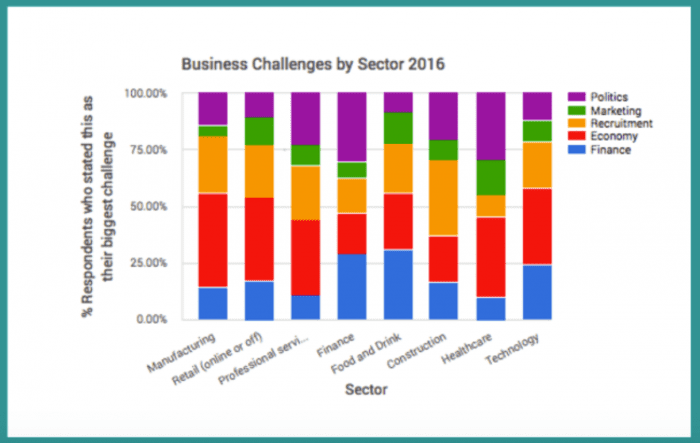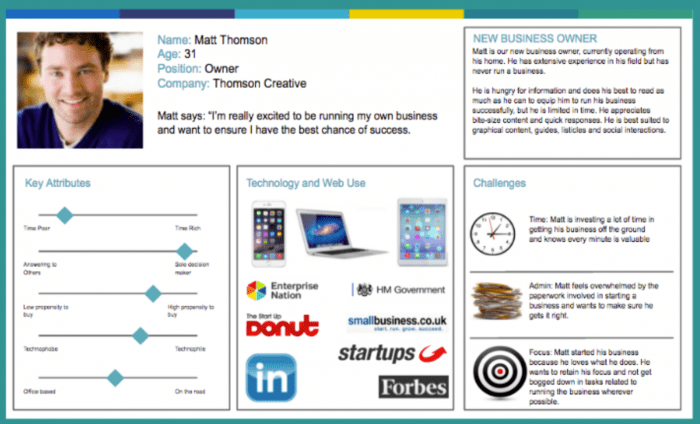Improve audience understanding for more persuasive marketing campaigns in four steps
Gone are the days of randomly placing keywords and ranking for any term we liked. Today’s savvy marketer recognizes that in order to succeed in the Google search results, and more widely online, we need to forget old-school techniques of trying to appeal to the search giants and focus instead on our end user.
Customer personas are a powerful marketing tool which enables us to better articulate our audience’s needs and complexities in a usable manner. Here, I’ll explain how to create useful marketing personas to guide your marketing strategy.
Download Expert Member resource – Persona research guide
This guide will help you build personas using the most appropriate research techniques. The research doesn't need to be lengthy or costly, as this guide explains.
Access the Persona research guide
Back to basics: audience demographics
The first step to better understanding your audience is to extract basic demographical information. There are various ways to do this.
Ask your client/team
The first place to look for audience information is your client (if you work in an agency) or your team (if you work in house).
Gather your marketing team, your sales team, your customer service team and ask them:
- Who are our customers?
- Where are they based?
- What jobs do they do?
- What do they need?
- Why do they buy from us?
We did this exercise with one of our clients, Donington Park (an events venue here in the Midlands), as a workshop. We had big pieces of paper and fat pens and we discussed our ideas as a group. Using the workshop method meant that everyone in the team felt they could contribute and we extracted insights that they hadn’t shared with one another before, as well as all of those ‘obvious’ aspects of their audience which they spoke about every day.
Review your sales data
Sales data is really useful in helping you to learn more about your audience.
If you use a CRM, you should be able to extract information about existing customers as well as new leads. You’re looking for as much information as possible about things like job titles, locations, gender, age, financial status and so on.
Gather sales insight
Your sales team will likely have their own way of segmenting new leads. Ask them how they qualify new leads into the business; are there any desirable attributes which they look out for as signals of the lead’s propensity to buy? Are there any undesirable attributes which they would exclude based on their knowledge that those leads don’t convert?
At this point, you’ll have some good insights into the basic demographical information surrounding your audience base. For many marketers, this is where the road to audience understanding ends. They create segments based on this basic information, often driven by age or location or job title, and believe that’s enough.
But I believe it doesn’t stop there. To truly understand our audience, we need to delve deeper.
What motivates your audience?
The next level of understanding comes from asking what motivates your audience. You want to find out:
- What needs do they have?
- What challenges do they face?
- What are they looking for when reviewing your product or service?
Again, there are numerous ways to extract this information.
Customer surveys
Customer surveys can be extremely powerful. They not only give you the opportunity to gather valuable information, studies have shown that asking customer feedback can increase conversions and improve retention rates too.
Surveys can be done face to face, via email or over the phone. You might run a poll on your social media channels or even host a pop up on your site. The end goal is to better understand the answers to the questions I posed above.
We ran a survey for another client, Company Check, in late 2015 where we asked 1,000 business users of the site to provide their feedback on a series of questions around business matters. The results provided a valuable insight into their experience, including information on the challenges they expect to face in 2016.

We also asked participants to tell us what industry they operated in and what size their business was, which gave us loads more information about our user base. We are now creating content which appeals to those needs. You can see the survey itself here.
As an aside, this survey was also featured on Forbes, International Business Times, Yahoo News and many more, showing that surveys can also be a valuable digital PR tool.
Keyword research
If you work in SEO, you’re likely to be very familiar with the practice of keyword research to better understand the phrases your target audience uses when searching for your services.
But have you considered what keyword research can reveal about your audience’s motivations?
I like to use the related searches on Google to gain this insight. Simply search for a phrase that’s important to your client, something top level like ‘SEO services’, for example. The scroll to the bottom of the results and Google will make suggestions of other related searches.
In this example, the related searches include ‘seo service pricing’, ‘how much do seo services cost’ and ‘seo service price’. This indicates that price is a factor for this audience. We also see ‘seo reading’, ‘seo kent’, ‘seo nottingham’ and so on, suggesting location is also a factor.
There are lots of other tools you can use for this, some of which I’ve listed for you here.
What interests does your audience have?
The next step is to consider what interests your audience has. You want to find out:
- What do they enjoy?
- What are they thinking about?
- What’s topical in their industry?
Here are some techniques to help you here:
Conference Topics
One technique I find really helpful is to follow the conferences that are targeted to my audience. I want to see what topics they are covering, as this can give me an insight into the trends in that industry.
It’s also worth looking out for any hashtags being used by the conference on Twitter. You can track this to see what attendees are talking about, giving you access to real-time insight. I like to use Hootsuite for this, and have written a guide to using Hootsuite, but there are other social monitoring tools available.
Targeted publications
Do you follow the publications and websites which target your audience? This could include blogs, forums, online/offline magazines and competitor sites.
It’s highly likely they’re going through the same processes as you to understand their audience so by reviewing the content they share, you can get inspiration for your own.
YouGov Profiler
This tool is great for adding those more personal traits that will make your personas into ‘people’.
Free to use, the YouGov Profiler gives you information on your audience’s hobbies, interests, brand affiliations and much more, based on records from over 400,000 survey respondents.
Building your personas
Once you’ve gathered this information, you’ll be ready to build them into personas. Remember, personas are meant to be tools for your use, so consider how to make them easy to use for everyone in your business.
The most common way to do this is to create a one-page visualisation. This includes a photo, name, summary and other key information from your research. Here’s an example of one I created for my client Company Address:

I recently spoke at Brighton SEO, the UK’s leading digital marketing conference, on the topic of personas and how to use them to guide your strategy. You can view the slides and video of my talk here:
I also wrote about how to use personas in your content marketing strategy on Smart Insights here:

Laura Hampton is the digital marketing manager at Nottingham SEO agency
Impression. She specialises in SEO, digital PR and content marketing. You can follow Laura on Twitter @lauralhampton or @impressiontalk.






 Laura Hampton is the digital marketing manager at Nottingham SEO agency
Laura Hampton is the digital marketing manager at Nottingham SEO agency 


